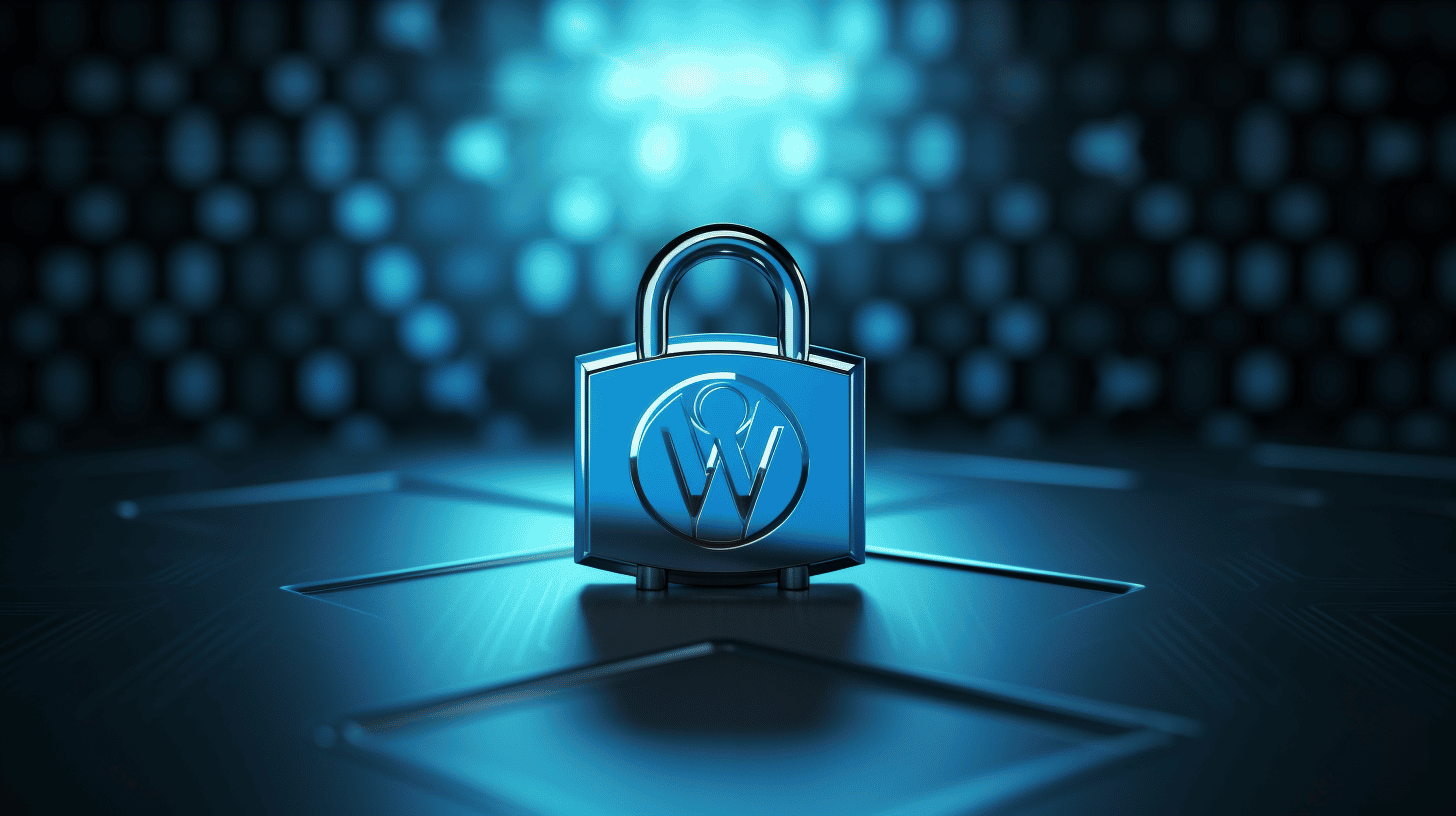In today’s digital landscape, online security is of paramount importance. For IT managers, ensuring the safety and integrity of their websites is a top priority. One popular platform that businesses rely on for their online presence is WordPress. As the leading content management system (CMS) in the world, WordPress powers over 35% of websites on the internet. While its popularity brings numerous benefits, it also makes WordPress a target for cybercriminals.
🔐 In this article, we will dive into the world of WordPress security and provide IT managers with valuable insights and practices to bolster their online presence and protect their websites from potential threats. We will explore the challenges associated with WordPress security, the risks of vulnerabilities, and key security practices to implement.
Understanding WordPress Security Challenges
WordPress, being one of the most popular content management systems (CMS) in the world, is not without its security challenges. In this section, we will dive into some eye-opening statistics and reasons behind WordPress website attacks, shedding light on the importance of prioritizing security measures.
Vulnerability Statistics
Before delving into the reasons behind WordPress website attacks, let’s take a closer look at the vulnerability statistics associated with the platform. These statistics paint a clear picture of the security challenges faced by WordPress users:
- According to iThemes Security, a staggering 1,779 WordPress vulnerabilities were reported in 2022. This number more than doubled to 4,833 in 2023[1].
- Shockingly, 26% of these vulnerabilities remain unpatched, leaving websites exposed to potential security breaches[1].
- The WPScan database, a comprehensive resource for WordPress vulnerabilities, has identified over 49,000 vulnerabilities to date[1].
These statistics highlight the urgency of implementing robust security measures to protect WordPress websites from potential threats.
Proportion of Websites Running on WordPress
To understand the significance of WordPress security challenges, it’s essential to grasp the platform’s market share and its prevalence on the web. Consider the following:
- WordPress powers a significant portion of the internet, with an astonishing 45.8% of all websites utilizing the platform[1].
- With such a large proportion of websites running on WordPress, it becomes an attractive target for malicious actors seeking to exploit vulnerabilities and gain unauthorized access.
These numbers serve as a reminder that the popularity of WordPress also makes it a prime target for attackers.
Reasons for WordPress Website Attacks
Now that we understand the vulnerability statistics and the prevalence of WordPress websites, it’s important to explore the reasons behind targeted attacks on these sites. Key factors contributing to WordPress website attacks include:
- Vulnerabilities in plugins and themes: Approximately 89% of reported WordPress vulnerabilities occur in plugins and themes[1]. Plugins and themes offer extended functionality and customization options, but they can also introduce vulnerabilities if not kept up to date.
- Hosting platform vulnerabilities: A significant portion of WordPress attacks, about 41%, can be attributed to vulnerabilities on the hosting platform[1]. This highlights the importance of selecting a reliable and secure hosting provider.
By addressing these vulnerabilities and taking proactive measures, WordPress users can significantly enhance the security of their websites.
To learn more about the specific vulnerabilities and threats associated with WordPress, you can refer to the WordPress Vulnerability Report. This report provides valuable insights into the security landscape and offers guidance on securing your WordPress site.
Remember, staying informed about the security challenges surrounding WordPress is the first step towards taking the necessary precautions to protect your website from potential risks.
🔒 Stay tuned for the next section, where we will discuss key security best practices for safeguarding your WordPress site.
Risks Associated with WordPress Vulnerabilities
With its user-friendly interface and extensive plugin library, WordPress has become one of the most popular content management systems (CMS) in the world. However, popularity often comes at a price, and in the case of WordPress, the price is an increased risk of cyberattacks. In this section, we will explore the impact of cyberattacks on WordPress websites and the potential threats that users need to be aware of.
Impact of Cyberattacks
Cyberattacks on WordPress websites can have far-reaching consequences for individuals and businesses alike. Here are a few reasons why these vulnerabilities pose such a significant risk:
- Data Breach: A successful cyberattack can lead to the exposure of sensitive user information, such as names, email addresses, and even payment details. This not only jeopardizes the privacy of users but also opens the door to identity theft and financial fraud.
- Website Downtime: Hackers often exploit vulnerabilities in WordPress to gain unauthorized access and take control of websites. This can result in websites being taken offline or defaced, leading to a loss of revenue, credibility, and user trust.
- SEO Impact: Websites that have been compromised by cyberattacks can suffer severe damage to their search engine rankings. Search engines, such as Google, prioritize user experience and security. If your WordPress website falls victim to an attack, it could be flagged as unsafe, ultimately leading to a drop in organic traffic and potential earnings.
Potential Threats
The constantly evolving nature of cyber threats means that WordPress users need to be proactive in protecting their websites. Here are some of the potential threats that WordPress vulnerabilities can expose you to:
- Malware Infections: WordPress websites can easily become infected with malware, which can be hidden in plugins, themes, or even the core WordPress files. Once installed, malware can perform malicious activities such as stealing data, redirecting traffic to malicious sites, or even launching attacks on other websites.
- Brute Force Attacks: Brute force attacks involve hackers attempting to gain access to WordPress websites by repeatedly trying different combinations of usernames and passwords. This can be particularly dangerous if users have weak login credentials or fail to implement necessary security measures.
- Plugin Vulnerabilities: While plugins offer added functionality to WordPress websites, they can also introduce vulnerabilities. Outdated or poorly coded plugins can become entry points for hackers, allowing them to exploit weaknesses and gain control of your website.
It’s important to note that no CMS is entirely immune to cyberattacks. However, being aware of the risks associated with WordPress vulnerabilities and taking the necessary steps to mitigate them can go a long way in protecting your website and securing your online presence.
Remember, prevention is key when it comes to WordPress security. Regularly updating your WordPress installation, themes, and plugins, implementing strong login credentials, and utilizing security plugins are just a few steps you can take to safeguard your website from potential threats.
🔒 Protecting your WordPress website is essential in the digital age. Stay vigilant, keep your software up to date, and be proactive in implementing robust security measures. By doing so, you can minimize the risks associated with WordPress vulnerabilities and ensure a safer online experience.
Key WordPress Security Practices
When it comes to WordPress security, taking proactive measures is essential to safeguard your website from potential threats. By implementing a few key practices, you can fortify your WordPress site and protect it from cyberattacks. In this article, we will explore some of the most important security practices that every WordPress user should follow to ensure the safety and integrity of their website.
Regular Updates
One of the primary steps you can take to enhance the security of your WordPress site is to keep all components up to date. This includes updating the WordPress core, themes, and plugins. Regular updates not only bring new features but also address vulnerabilities and security issues.
According to a study, outdated versions of WordPress, themes, and plugins are one of the most common reasons behind compromised websites. By updating your WordPress site, you minimize the risk of exploitation by potential hackers who constantly search for security loopholes. So, make sure to:
- Regularly check for updates within your WordPress dashboard
- Update your WordPress core, themes, and plugins whenever new versions are available
- Enable automatic updates to ensure that your site stays protected without manual intervention
Using Strong Passwords
Another fundamental aspect of WordPress security is the use of strong passwords. Weak and easily guessable passwords can make your website vulnerable to brute-force attacks. It’s crucial to create strong passwords that are difficult to crack.
Consider the following tips when setting up your WordPress password:
- Use a combination of uppercase and lowercase letters, numbers, and special characters.
- Avoid using common words, phrases, or personal information that can be easily guessed.
- Ensure that your password is at least 12 characters long.
- Consider using a password manager to generate and store complex passwords securely.
By implementing strong password practices, you significantly reduce the risk of unauthorized access to your WordPress site.
Installing Security Plugins
To enhance the security of your WordPress site, it’s advisable to install dedicated security plugins. These plugins provide additional layers of protection by identifying and resolving potential vulnerabilities. Some popular security plugins include Patchstack, Wordfence, Sucuri, and Malcare.
These security plugins offer features such as:
- Malware scanning and removal
- Firewall protection
- Brute-force attack prevention
- Two-factor authentication
- Login page customization
- Traffic monitoring and log analysis
By choosing and installing a reputable security plugin, you can reinforce the security of your WordPress site and ensure that potential threats are detected and mitigated effectively.
Backup Creation
Regularly creating backups of your WordPress site is an essential security practice. Backups act as a safety net, enabling you to restore your website in case of a security breach, data loss, or other unforeseen events.
Follow these guidelines to create effective WordPress backups:
- Use a reliable backup plugin to automate the backup process.
- Choose a secure and remote location to store your backups, such as a cloud storage service or an external hard drive.
- Set up a regular backup schedule, depending on the frequency of website updates.
- Test your backups periodically to ensure they can be successfully restored if needed.
By performing regular backups, you can have peace of mind knowing that your website’s data is secure and can be easily restored if necessary.
Changing Default Login URL
WordPress websites commonly use the default login URL, making them an easy target for brute-force attacks. Changing the default login URL adds an extra layer of protection by making it more difficult for hackers to locate the login page.
Here’s how you can change the default login URL:
- Install and activate a security plugin like WPS Hide Login or Rename wp-login.php.
- Follow the plugin’s instructions to configure and customize your new login URL.
By changing the default login URL, you can significantly reduce the number of login attempts, protecting your WordPress site from automated attacks.
Proper User Access Management
Managing user access is crucial for maintaining the security of your WordPress site. Limiting user privileges to only what is necessary minimizes the risk of unauthorized access and potential damage to your website.
Consider the following best practices for user access management:
- Regularly review and update user roles and permissions.
- Remove inactive or unnecessary user accounts.
- Use strong authentication methods, such as two-factor authentication, for user logins.
- Restrict the number of administrators and limit their access rights.
- Educate your users about secure login practices, such as avoiding public Wi-Fi networks and using VPNs for remote access.
By implementing proper user access management, you control who can access your WordPress site and reduce the likelihood of security breaches.
Implementing these key WordPress security practices protects your website and valuable data from potential threats. Remember, maintaining a secure WordPress site requires ongoing awareness and vigilance. Stay up to date with the latest security trends, regularly audit your site, and make security a top priority. By taking these steps, you can ensure that your WordPress site remains safe and secure for your visitors. For more tips on improving WordPress security, check out Tips for Improving WordPress Security.
Conclusion
In conclusion, implementing robust security measures for your WordPress website is crucial in safeguarding your online presence and protecting your valuable data. By staying proactive and following key security practices such as regular updates, strong passwords, and the use of security plugins, you can significantly reduce the risk of cyberattacks.
Remember, WordPress vulnerabilities are a real and ongoing threat, but with the right precautions and a reliable hosting platform like Managed-WP™, you can fortify your website’s security and enjoy peace of mind. Managed-WP™ offers a premium managed WordPress cloud hosting platform that simplifies infrastructure, provides expert support, and ensures proactive monitoring. By choosing Managed-WP™, you can focus on your business while leaving the technical aspects to the experts.
Secure your WordPress website today and bolster your online presence with Managed-WP™. Find out more about our services here. 💪🔒
Frequently Asked Questions
- Why is WordPress security important for IT managers?
WordPress security is crucial for IT managers as it helps protect sensitive data, prevents unauthorized access and data breaches, maintains the reputation of the organization, and safeguards against potential legal liabilities.
- What are some common WordPress security vulnerabilities?
Some common WordPress security vulnerabilities include weak passwords, outdated plugins and themes, insecure hosting environments, lack of regular updates and patches, and insufficient user permissions.
- What security measures can IT managers implement to strengthen WordPress security?
IT managers can implement various security measures, such as using strong and unique passwords, keeping plugins and themes updated, using secure hosting providers, enabling Two-Factor Authentication (2FA), implementing a Web Application Firewall (WAF), and regularly performing security audits.
- Are there any WordPress security plugins that IT managers can use?
Yes, there are several WordPress security plugins available for IT managers to enhance website security. Some popular options include Wordfence Security, Sucuri Security, iThemes Security, and All In One WP Security & Firewall.
- What steps should IT managers take in case of a WordPress security breach?
In case of a WordPress security breach, IT managers should immediately isolate and quarantine the affected environment, change all passwords, take backups for further analysis, investigate the breach to identify the cause, restore the website from a clean backup, and implement additional security measures to prevent future breaches.



















